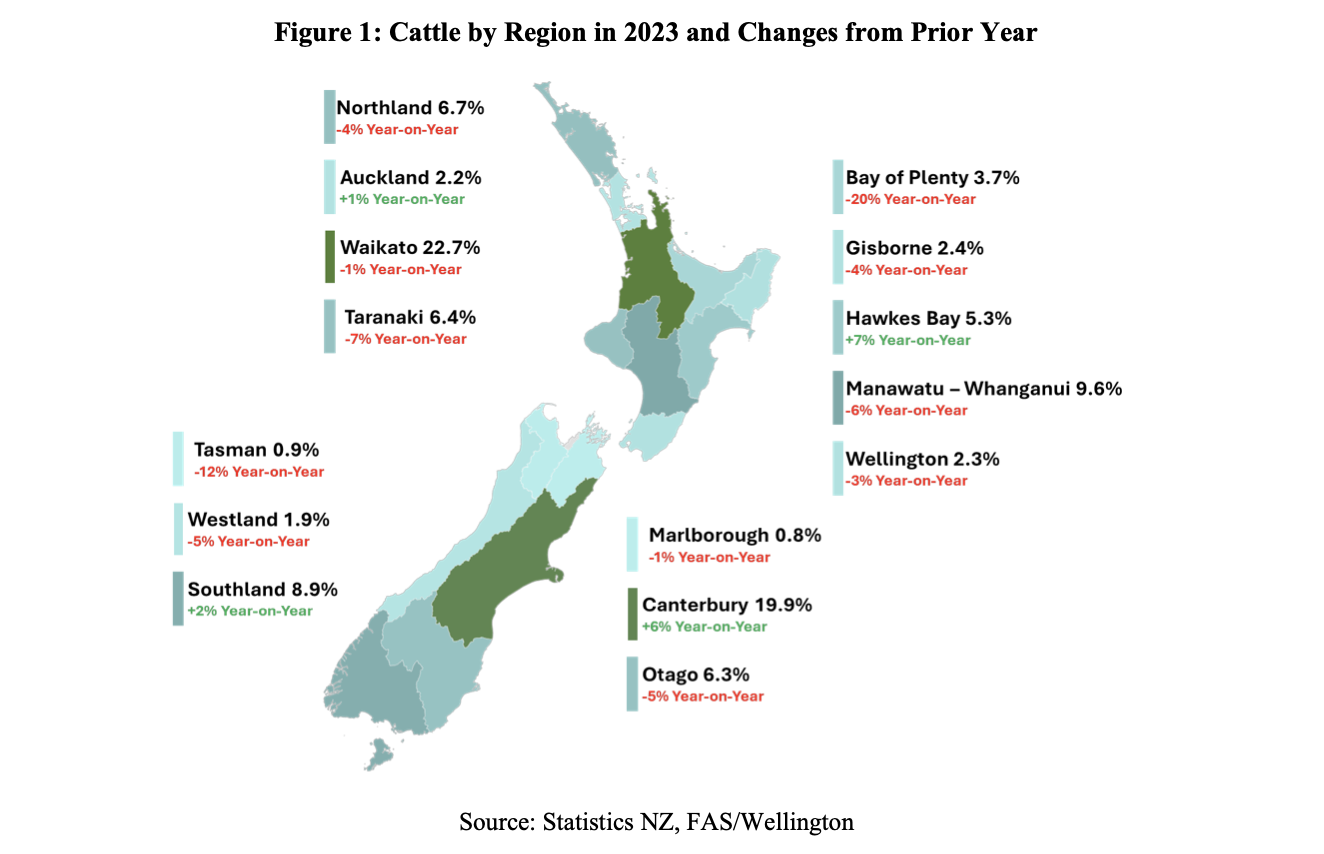USDA forecasts NZ beef herd shrinkage in 2025
Low farm gate prices cited as one cause
The US Department of Agriculture’s Foreign Agricultural Service post in Wellington, New Zealand forecasts cattle numbers to begin the 2025 Market Year (MY) at 9.56 million head, ending at 9.41 million, according to a recent USDA Global Agricultural Information Network (GAIN) report.
These numbers are being forecasted primarily due to the following factors impacting the sector: a decline in on farm profitability, low farm gate prices and a warmer winter leading to favourable pasture production.
New Zealand is a major beef producer and exporter, typically the sixth largest exporter in the world, or 5.4 percent of world volumes. The beef herd spreads throughout the country, with 70% situated in the North Island and 30% in the South Island (see Figure 1).
The New Zealand cattle sector is unique because of its integration with the huge dairy industry, and approximately 70% of the adult cattle slaughtered each year and 100% of the calves slaughtered have their origin in the dairy industry.
The national dairy herd comprises 62% of the total national cattle herd, with beef breeds accounting for 38%. Figure 1 also shows that year on year, the national herd and distribution are constantly changing; most of the distribution changes result from seasonal climatic conditions.

With New Zealand’s temperate climate, beef cattle production is almost entirely from pastoral grazing, with only one major feedlot in Canterbury. As a result, most exports are grass-fed beef. Since the beef industry is pasture-based, and the dairy industry has made a huge contribution to beef production (for example, culled dairy cows), beef production and exports are highly seasonal in New Zealand. These peak before the winter in May and June and then fall sharply until recovering in November and December with the onset of summer.
